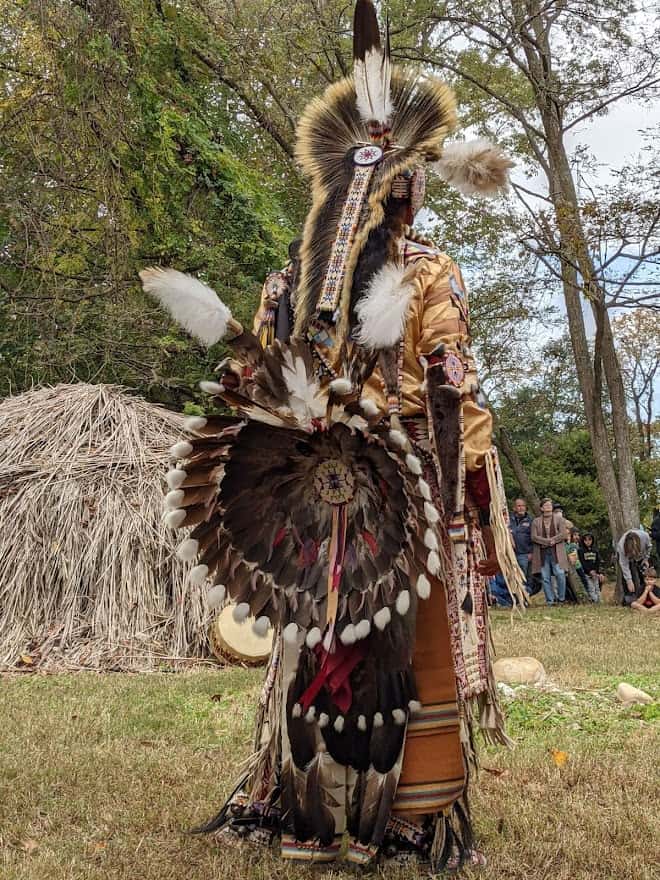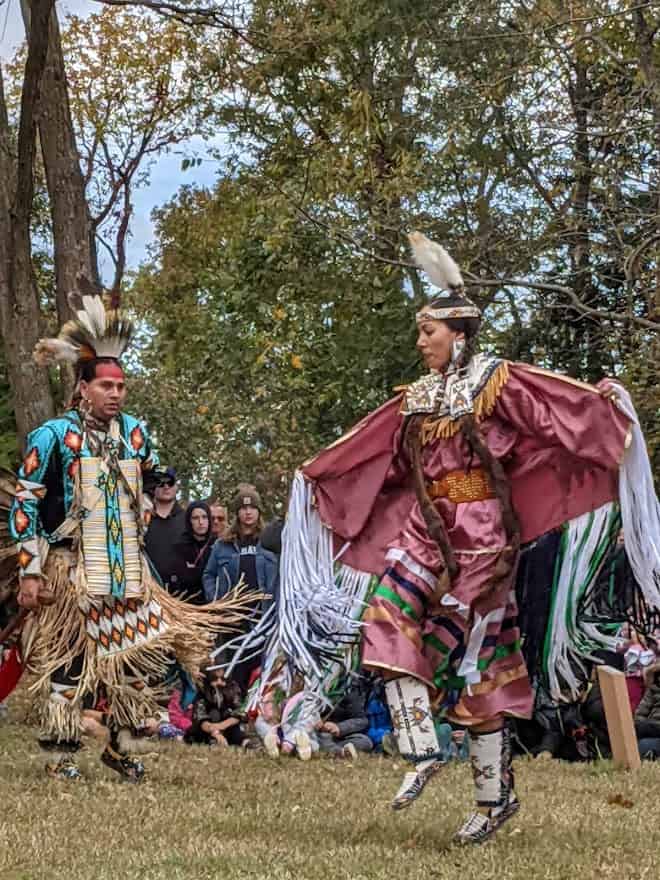Still Here: American Indian Heritage Day at Jefferson Patterson Park
By Molly Weeks Crumbley
November marks National American Indian Heritage Month, a time of year dedicated to learning about and honoring the stories of the many tribes that inhabited the land on which we live. Here on the shores of the Chesapeake Bay, the people of the Piscataway Nation, the same tribe John Smith met when he voyaged up the Potomac River in 1608, once populated the land.
To pay tribute to and educate the public about the indigenous Piscataway people, Jefferson Patterson Park and Museum in St. Leonard recently hosted its annual American Indian Heritage Day. They aimed to “celebrate and honor the contributions American Indians have made, and continue to make, to the social and cultural fabric of our nation.”
On Saturday, crowds of adults and children gathered at the park’s replica Woodland Indian Village to learn about Maryland’s first people in an engaging celebration that put the Piscataway Nation front and center. Different stations invited attendees to engage in hands-on activities highlighting different aspects of Native American life. The popular archery and spear throwing areas illustrated native hunting practices, and adults and children alike enjoyed trying their hands at using atlatls to propel their projectiles even further. Flint knapping and pottery stations showed the importance of fire as a source of heat and light, soapstone shaping and basket weaving showed off the ways that natural materials were turned into jewelry and handicrafts, and native plant stations let attendees try out different fruits. In addition to the activity stations, exhibits of jewelry, crafts, and artifacts were on display from the Maryland Archaeological Conservation Lab collections and from American Indian vendors and craftspeople.
While all of the activities were excellent, the true showcase of the event was the afternoon performance by the Piscataway Nation Singers and Dancers. The Piscataway Nation is indigenous to Maryland and had territory extending through Delaware, Virginia, Pennsylvania, and Ohio. Led by Mark Tayac, who serves as drummer and narrator, the group has been performing around the globe—and on the History Channel—for years, sharing their tribe’s traditions. Tayac explained that the Piscataway Nation is just one of many tribes native to the United States.
“We’re made of over 500 different tribes or nations,” he told the audience. “Many of our people have different languages, different customs, different traditions, different forms of homes, different forms of tribal governments. We’re actually very diverse from region to region to region, but we do believe that we are all one people. What bonds us together is our DNA, our Indian blood.”
The Piscataway Nation Singers and Dancers, clad in colorful traditional clothing, highlighted abbreviated versions of 10 different dances traditional to their tribe. Animals inspired many of the performances: Rabbit Dance, Crow Hop, Eagle Dance, and Snake Dance. Others showcased the welcoming of spring, the beginnings of courtship, and the athleticism of war and hunting.
Tayac believes that his group’s performances can help audiences understand that American Indians are still a part of society today, not just a footnote in a history book or a sports team mascot.
“Our culture didn’t die in a John Wayne Hollywood movie,” he says. “It lives in our hearts. We are descendants from such great leaders are Geronimo, Sitting Bull, Tecumseh, Chief Joseph, Osceola, and all the great people who have gone on before us. We can hold our heads high and be proud of who we are, for we have survived. We are still here today.”
Jefferson Patterson Park and Museum and its Woodland Village are free to the public and home to several events highlighting American Indians throughout the year. For hours and information, visit jefpat.maryland.gov or on Facebook @JPPMMD.





